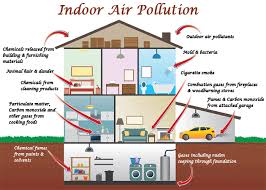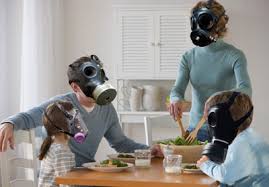The quality of indoor air is closely related to our health. Indoor air pollution is 5-10 times higher than outdoor, and there are more than 500 indoor air pollutants. Indoor air pollution has become a cause of many diseases. If air pollution is serious, what harm will it bring to people? What should be done after discovery? Check it out with OLANSI.
1.Harm to the eyes
Harmful gases released from decoration materials can stimulate eyes to cry, itchy, and cause ocular mucosa edema.
2. Harm to the respiratory system
Slow inhalation of formaldehyde and ammonia in a short period of time will cause sore throat, hoarseness, cough, wheezing, bloodshot sputum, chest tightness, dyspnea, and symptoms such as dizziness and nausea. In severe cases, pulmonary edema and adult respiratory distress will occur. Levy. It can also cause chronic respiratory diseases and reduce lung function.
3. the harm to the skin
Frequent exposure to formaldehyde, benzene and other gases will cause the skin to become dry and desquamated due to degreasing, and some will develop allergic eczema; long-term exposure to ammonia may cause symptoms such as skin pigmentation or finger ulcers.
4. carcinogenic
When radon decays, it can emit ɑ rays, bombard lung cells, damage them, and induce lung cancer; some of the total volatile organic compounds have been listed as carcinogens, such as vinyl chloride, benzene, polycyclic aromatic hydrocarbons, etc. The combustion products of human activities, such as cooking fumes and carbon monoxide in the kitchen, can cause emphysema and cancer.
5. Harm to women
Long-term exposure to low levels of formaldehyde can cause menstrual disorders in women; when pregnant women are exposed to a mixture of toluene, xylene and benzene, the incidence of pregnancy complications such as pregnancy-induced hypertension and pregnancy anemia will increase significantly, and it will also cause neonatal abnormalities. Statistical studies have also found that the rate of spontaneous abortion among female laboratory workers and workers exposed to toluene has increased significantly. Serious indoor pollution can also lead to infertility.
6. Harm to children
Indoor air pollution can cause children’s asthma, skin allergies, obesity, etc.; long-term low-dose inhalation of benzene can cause children to suffer from leukemia; some toxic gases (such as carbon monoxide) can damage children’s nerve cells and cause children’s mental retardation.
Ways to control air pollution:
1. Plant Law
Place green plants such as Chlorophytum, Aloe, etc. in the room. Some plants have the effect of absorbing harmful gases and beautify the room, but the effect is slower.
2. Ventilation method
It is used in the decorated rooms with light odor, good ventilation, and long-term ventilation. For rooms with heavy pollution and poor ventilation, it is difficult to achieve the effect of removing peculiar smell.
3. Activatedcarbon adsorption method
The principle of activated carbon adsorption and purification is used to adsorb macromolecular gas suspended particles in the air, and the purpose of filtering and purifying the air is achieved by forced air circulation.
The activated carbon filter of the air purifier uses this principle, and then combines the super filtering effect of the HEPA filter to give everyone a healthier indoor environment. The OLANSI air purifier has an activated carbon filter and a HEPA filter, and a sterilizing UV lamp is added to provide more powerful protection for people’s daily healthy life.





